
Kombucha — My Favorite Drink
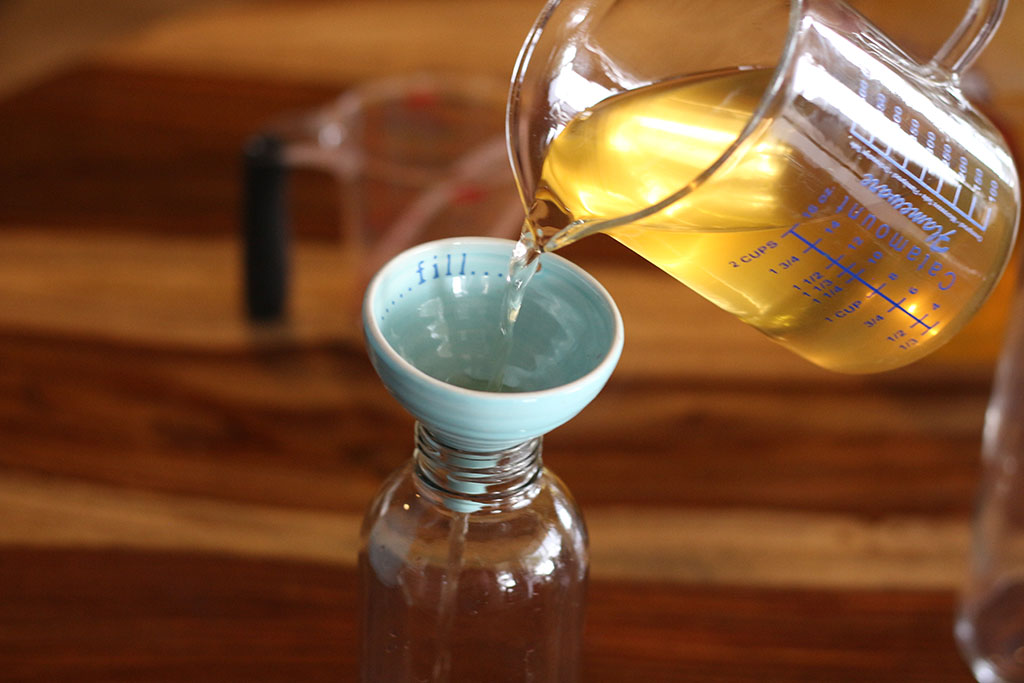 Kombucha has been a part of my life for over twenty years. It was the second cultured food I made, and down through the years I've learned so much about this probiotic drink it continues to amaze me. Kombucha has a special probiotic called Saccharomyces boulardii (S. boulardii). S. boulardii is one of the most researched probiotics and has been used worldwide to support gastrointestinal health. To be an effective probiotic it must survive its passage to the colon. This means it needs to survive at the body temperature of 98° F and be resistant to stomach and bile acids, and then survive the complex and diverse microbial world of the intestinal tract. S. boulardii does this and more, and it's resistant to antibiotics, heat, and stomach acids. It has been used in hospitals to help with acute diarrhea in children and adults, offering support for Clostridium difficile (C. diff), bowel disorders, AIDS patients, children with autism, and inflammatory bowel disease. If you need to take an antibiotic, it's a powerful probiotic to take since it is resistant to antibiotics and it will be helpful if you find yourself with Candida overgrowth.
Kombucha has been a part of my life for over twenty years. It was the second cultured food I made, and down through the years I've learned so much about this probiotic drink it continues to amaze me. Kombucha has a special probiotic called Saccharomyces boulardii (S. boulardii). S. boulardii is one of the most researched probiotics and has been used worldwide to support gastrointestinal health. To be an effective probiotic it must survive its passage to the colon. This means it needs to survive at the body temperature of 98° F and be resistant to stomach and bile acids, and then survive the complex and diverse microbial world of the intestinal tract. S. boulardii does this and more, and it's resistant to antibiotics, heat, and stomach acids. It has been used in hospitals to help with acute diarrhea in children and adults, offering support for Clostridium difficile (C. diff), bowel disorders, AIDS patients, children with autism, and inflammatory bowel disease. If you need to take an antibiotic, it's a powerful probiotic to take since it is resistant to antibiotics and it will be helpful if you find yourself with Candida overgrowth.
Here are a few of the reasons I drink kombucha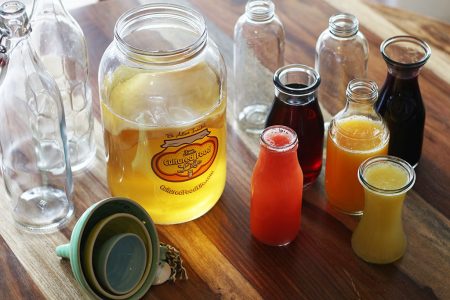
- Kombucha Helps With Detoxification
- Kombucha Helps Sore Throats and Coughs
- Kombucha Helps With Joints
- Kombucha Helps With Allergies
- Kombucha With Kidneys
- Kombucha Helps With Body Odor
- Kombucha Helps With Hormones
Check out this article to read more:
Frequently Asked Questions About Kombucha
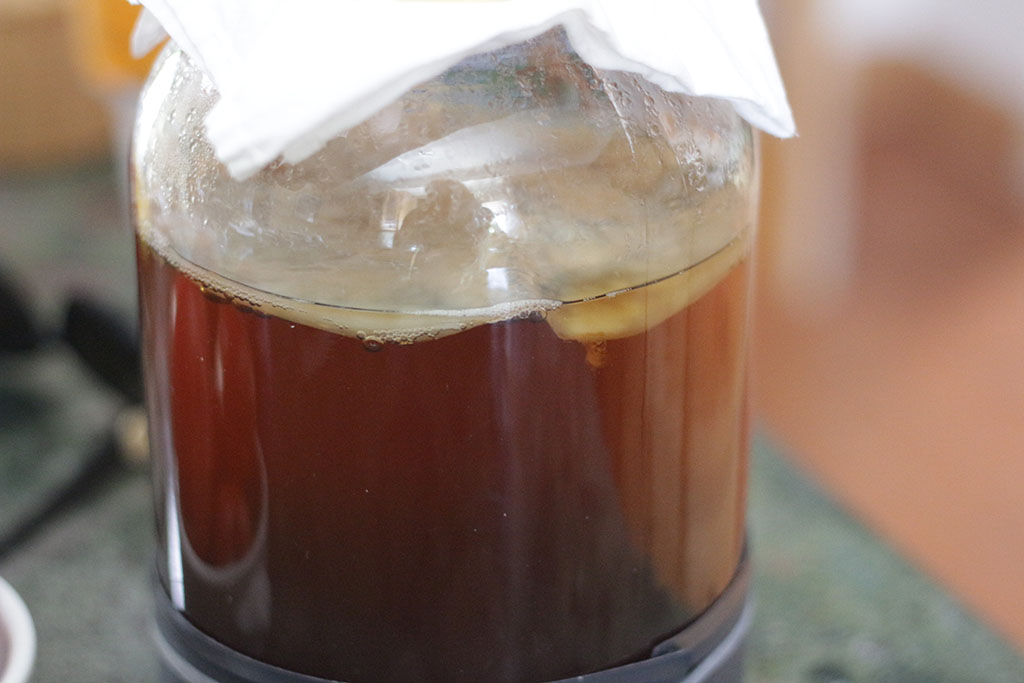
How long will my SCOBY last?
The SCOBY will last a long time, but not forever. If it turns black, starts to develop mold, or if it stops culturing your tea it’s time to toss it. It's always best to use the newest SCOBY to make your next batch of tea since this SCOBY will be the strongest one to culture your tea.
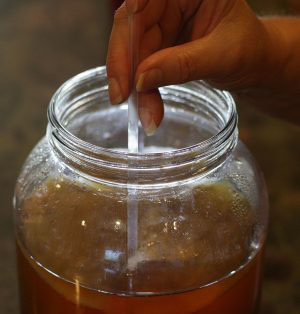
Is it okay to test my kombucha while it’s fermenting?
Yes! Feel free to check on it every so often to see how it’s doing. To do this, just pour off a couple of ounces for a taste test. Another method is to slip a straw along the inside of your brewing jar. Then put your finger over the top of the straw. Such a test might go like this:
- 4 to 6 Days—Too sweet; not all sugar converted.
- 7 to 9 Days—Tastes like sparkling apple cider.
- 10+ Days—Vinegar taste becomes prominent.
Remember to cover it back up after checking it!
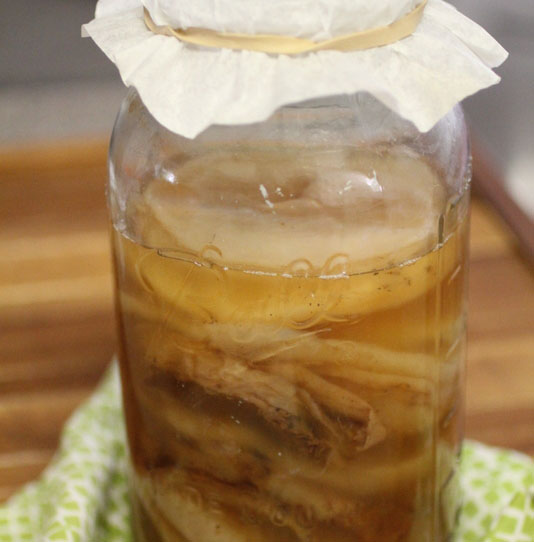
How do I store my SCOBY?
Store your SCOBY with enough kombucha tea to cover the SCOBY in a glass jar. If storing for less than a month, cover with a cloth napkin or coffee filter and secure with a rubber band. If storing for more than a month, use a plastic lid screwed on tight.
Store on your counter at room temperature. This will last at least a month, or a little longer stored this way. You can add bunches of SCOBYs to your jar and they stay preserved. Just make sure they're covered in kombucha tea and you're good! Check out the recipe!
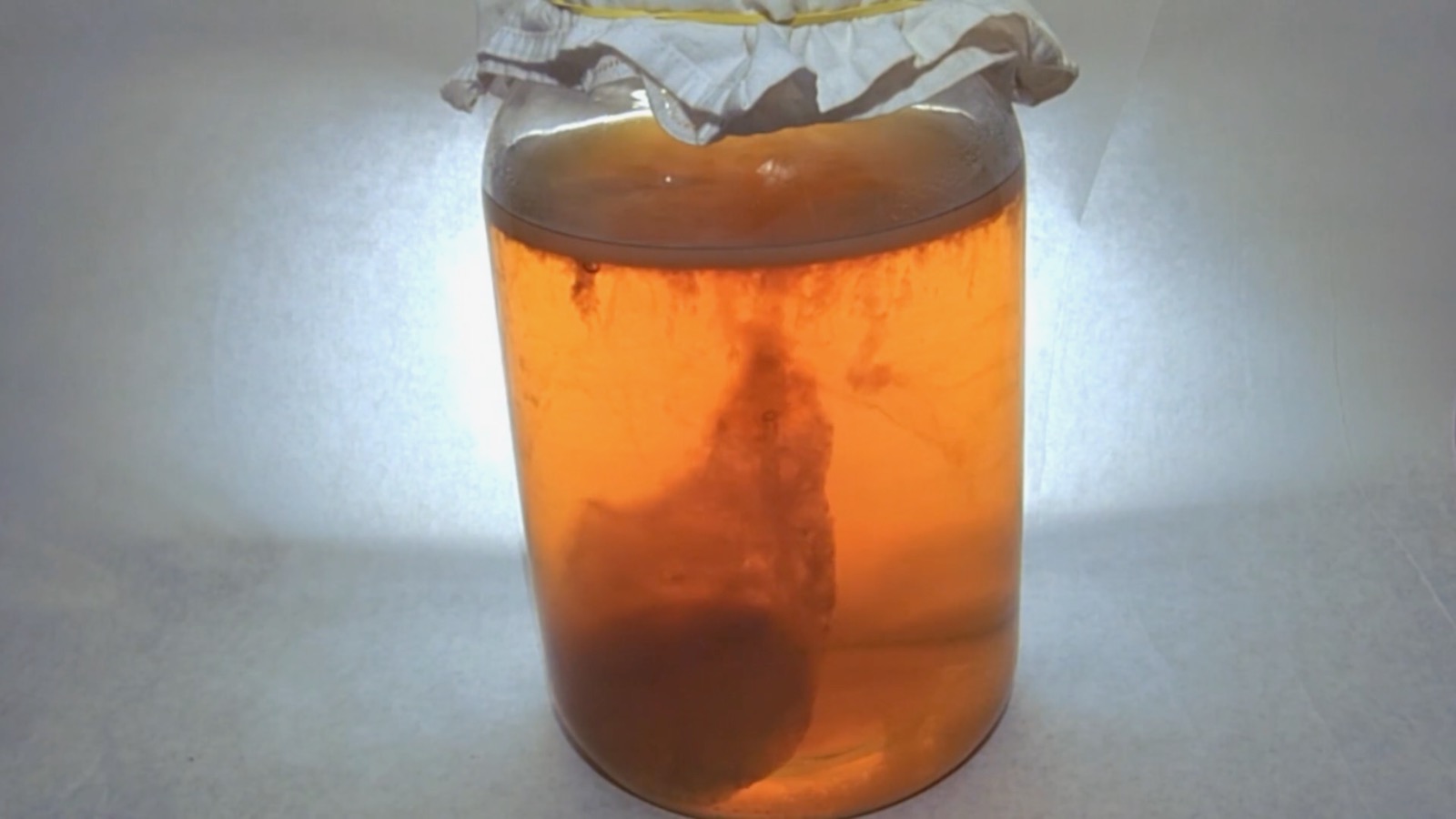
My SCOBY sank to the bottom when I made my kombucha. Is it okay?
It is 100 percent okay if your SCOBY sinks. Sink or float—it makes no difference to your kombucha. It won’t affect the brew or the taste. Sometimes it will float for a few days, then sink, and then rise again. SCOBYs have a mind of their own and either way it's fine.

My kombucha is still sweet. What did I do wrong?
Your house is probably on the cooler end of the spectrum, and kombucha takes longer to ferment at lower temperatures. Just leave it to ferment longer. I use a brew belt for a dependable temperature. You can also use a heating pad, but brew belts provide a consistent temperature that is more easily controlled than that of a heating pad.
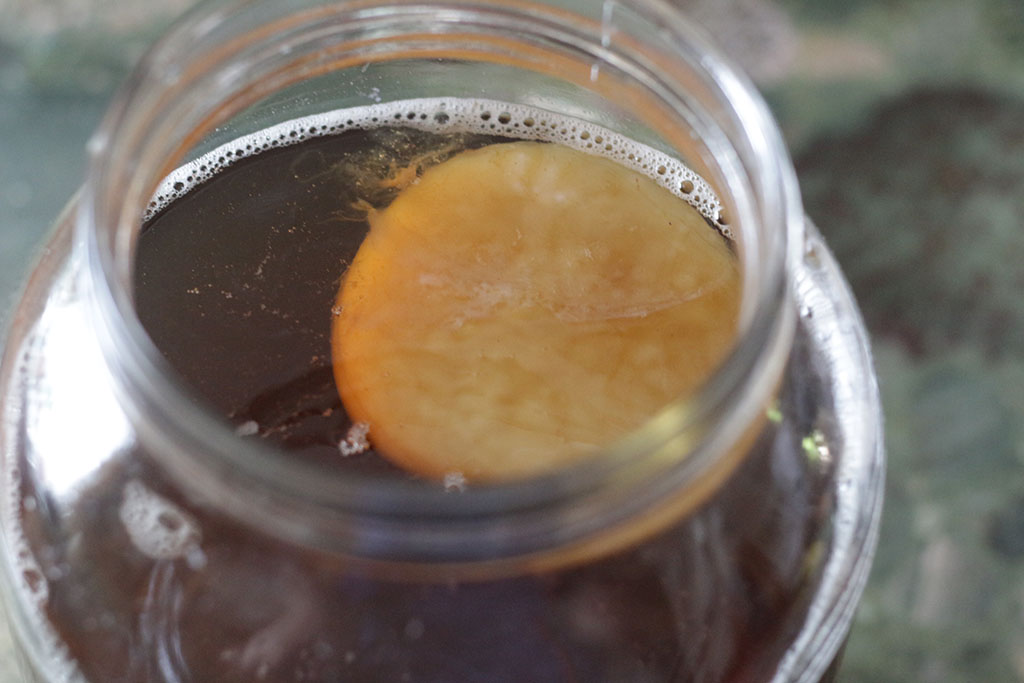
Day By Day Pictures of Kombucha Brewing.
Watching tea turn into kombucha is quite a thing to behold. You give it the ingredients and let it work its magic. Billions of microbes and yeasts transform the tea into a bubbly probiotic tea that you will love. When you first start making kombucha you might be concerned and not know what to expect, so I made something to help you. I took pictures day by day, step by step, as well as top and side views so you can see what is happening each day. I have a time-lapse video for you as well. Hopefully, this will help you feel confident and assured that your kombucha is fermenting properly.
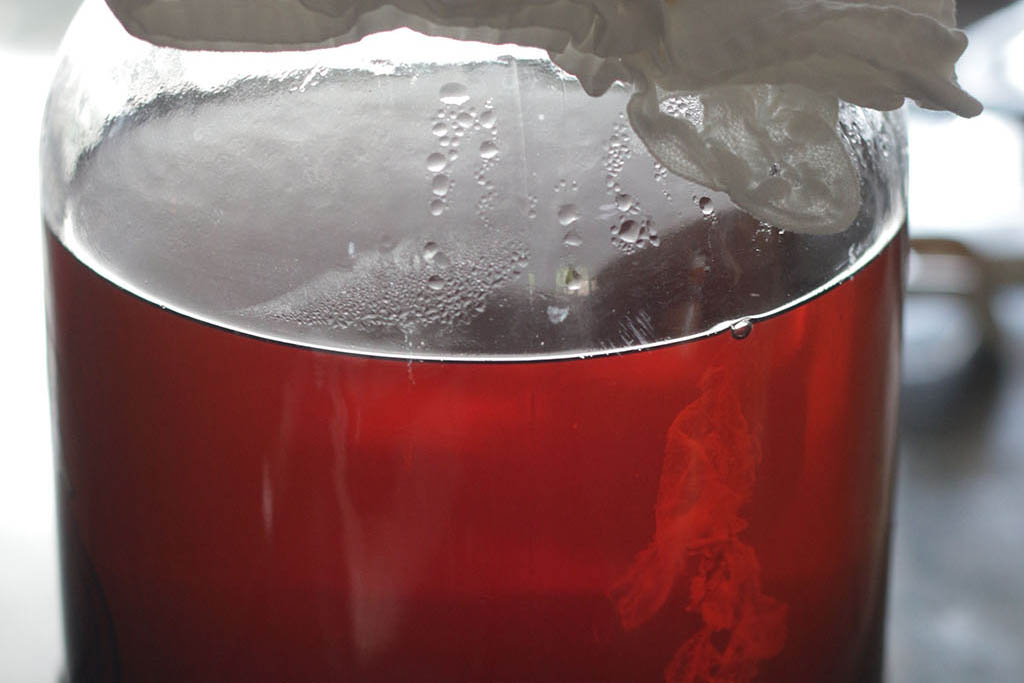
There are some weird brown stringy things in my kombucha. Is that okay?
Absolutely. You may also see dark brown spots. Both of these are normal. They’re simply a by-product of the good yeasts eating the sugar out of your tea. They look scary but are actually a good sign that your brew is fermenting properly.
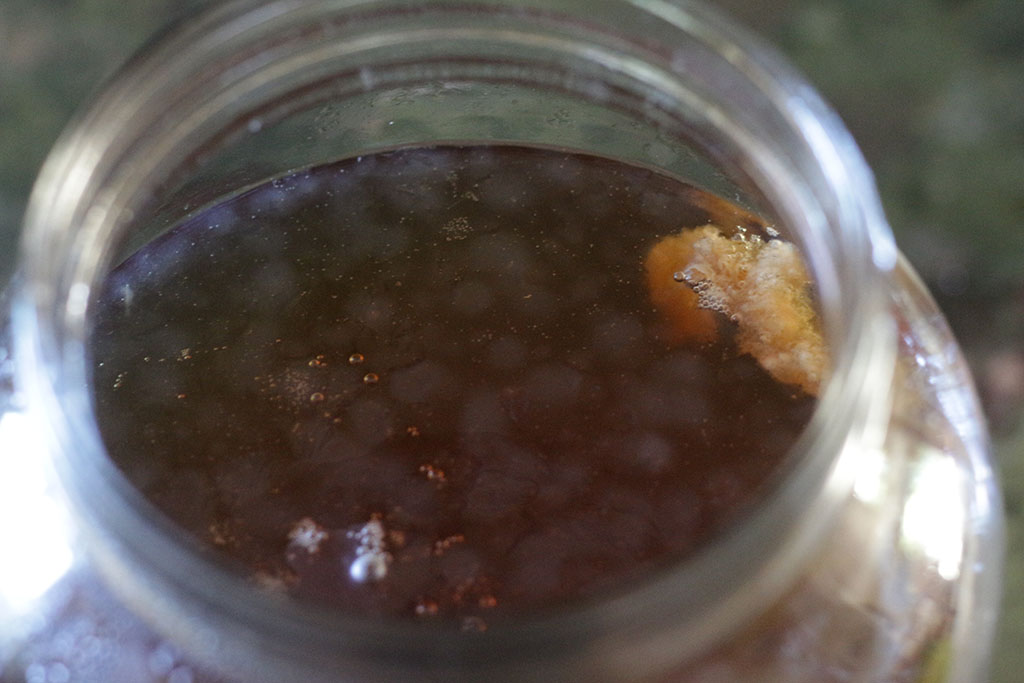
What about that clear film that’s forming at the top of my jar?
Don’t be alarmed! This is your new SCOBY forming! It will grow to the diameter of the jar or crock it is in. So if you have a wide jar, you will have a big SCOBY each time you make kombucha. The white spots are a normal process of fermentation. Only if the spots are hairy or fuzzy should you be concerned. It might be mold in this case, and I would recommend contacting me with a picture so I can check it out for you.
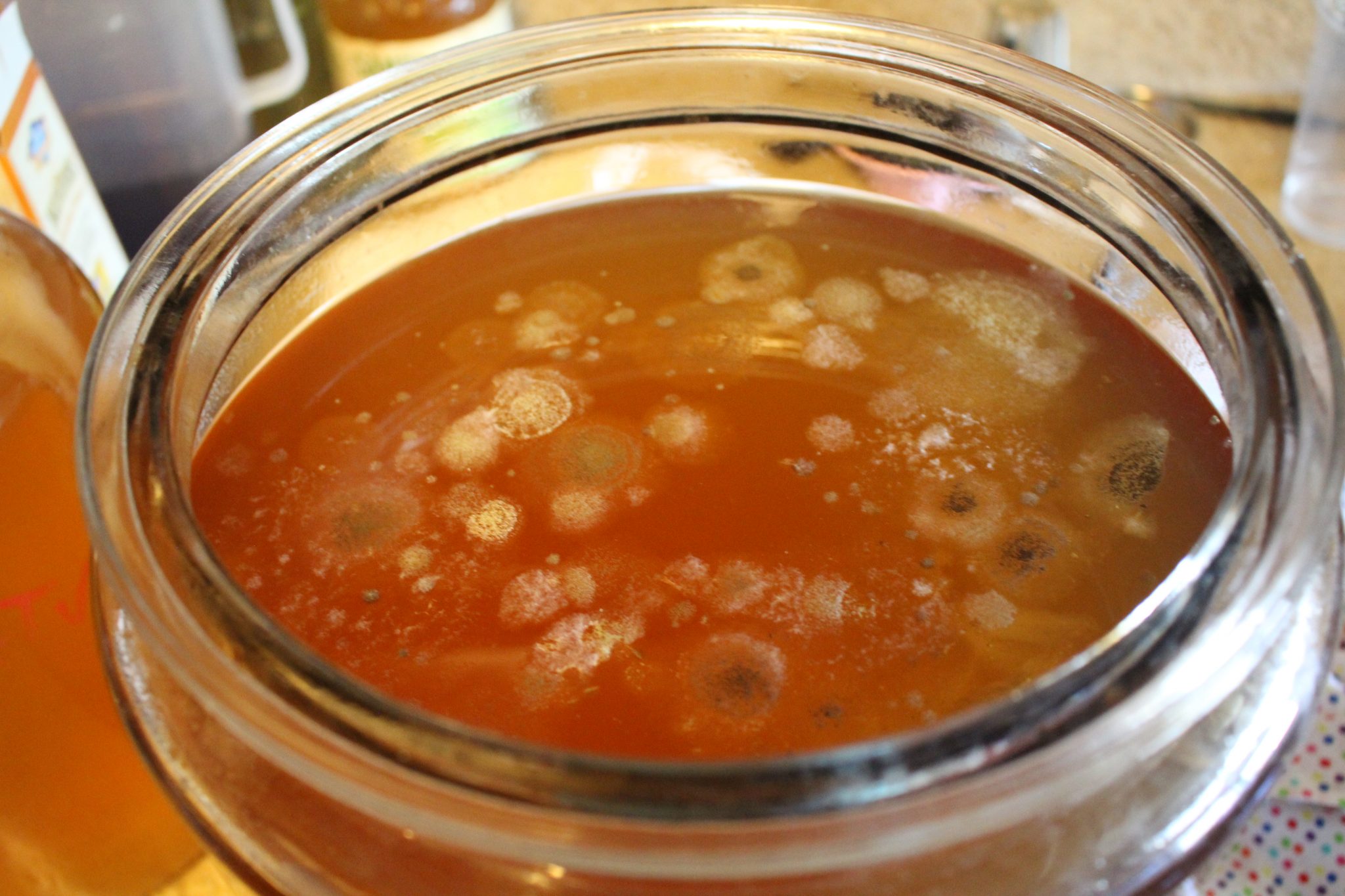
There is mold on my SCOBY. Is it still safe to consume the tea?
No, it’s not safe! If there is mold then you should throw the tea and the SCOBY out. As for why this happened, there are a couple of possibilities. Sometimes people do not use the right ratio of sugar and tea to starter culture, and so the tea doesn’t ferment properly. Be exact in your measurements. The other cause can be airborne molds in the house. I have had a few people develop this problem because of a leaky roof or by placing their pot in a closet that had poor air circulation.
Having said that, many times people who are brewing their kombucha see what they think is mold, but it’s actually just normal discoloration that is part of the fermenting process. If it’s hairy or fuzzy it’s probably mold. Unless you are absolutely sure that there is mold, send us a picture of your brew, and we’ll let you know.
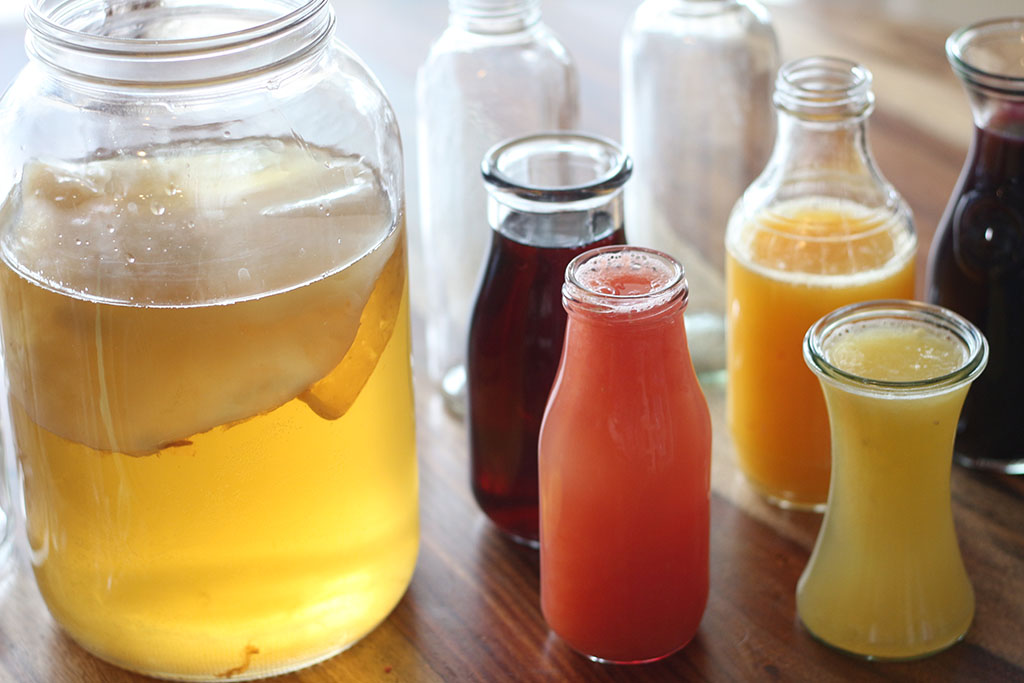
How do I make bubbly kombucha?
How do I increase the carbonation of my kombucha tea? One of the reasons your kombucha may not be bubbly is because it’s fermented for too long.The good yeasts in kombucha eat the sugar and then release carbon dioxide. This is what creates carbonation. If you let it ferment too long, the kombucha goes flat. If you don’t let it get vinegary, it will stay bubbly. When the yeasts eat the sugars out of the tea, they make carbonation. When they run out of sugar to eat, they start to die and so do the bubbles. Second-fermenting is another way to achieve carbonation. The process requires adding juices or extra sugars and then capping off bottles and letting them ferment so the yeast can transform the sugars into natural carbonation. Here's more info.
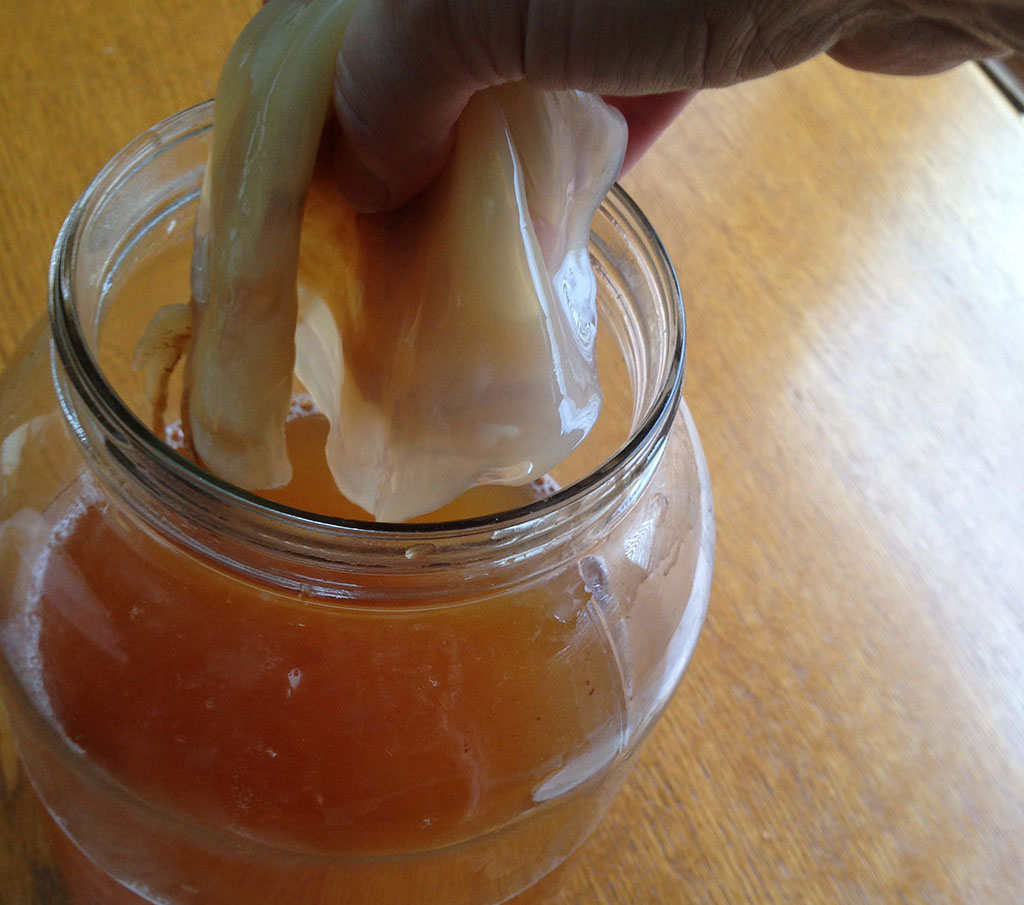
Can I cut up my SCOBY?
Yes, absolutely. You need only part of the SCOBY to ferment the tea. You can cut, tear, or rip, your scoby and it won't hurt it. It will still make great kombucha tea!
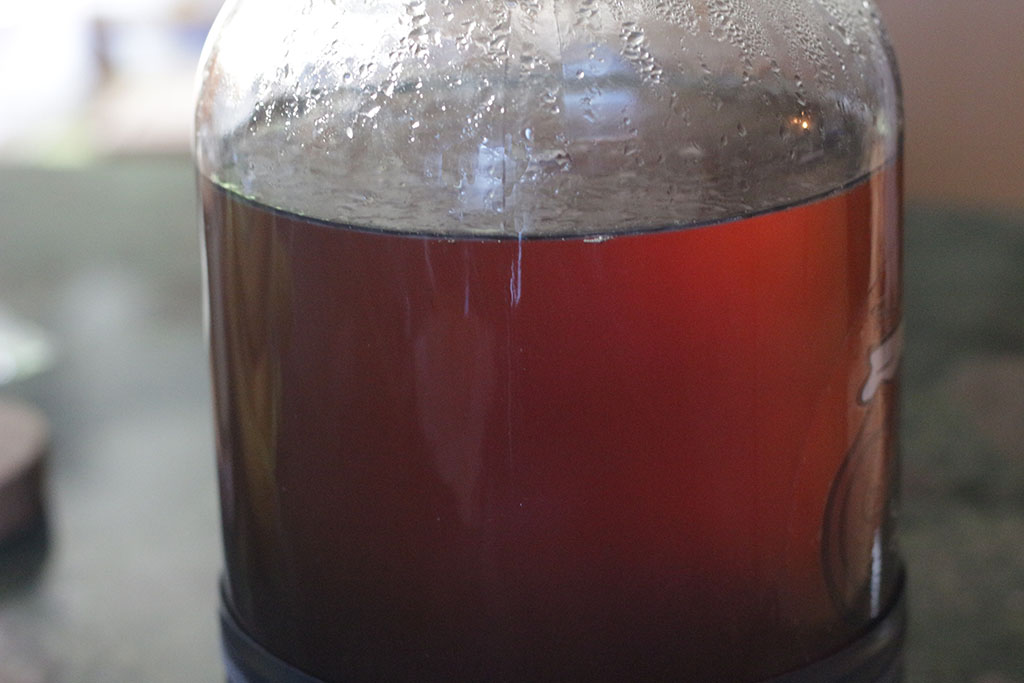
Why do I have a sulfur smell in my kombucha ?
A sulfur smell in kombucha isn't harmful, but the taste can be very unpleasant. Here are a few reasons this can happen.
- The water source you're using has hydrogen sulfide in the water giving it a strong taste of sulfur.
- The tea you're using has nitrogen present in the tea leaves, which can cause a sulfur taste in your brew.
- Wild airborne yeasts have become a part of your brew and although this isn't bad it can become a taste you don't like.
What to do: Try changing to a new water source and tea source and see if it changes. You can also let it brew longer, allowing it to go to a more vinegary stage and see if it subsides. If the above steps don't help, then the smell and taste has gotten into your SCOBY. You'll need to get a new one and dump your brew.
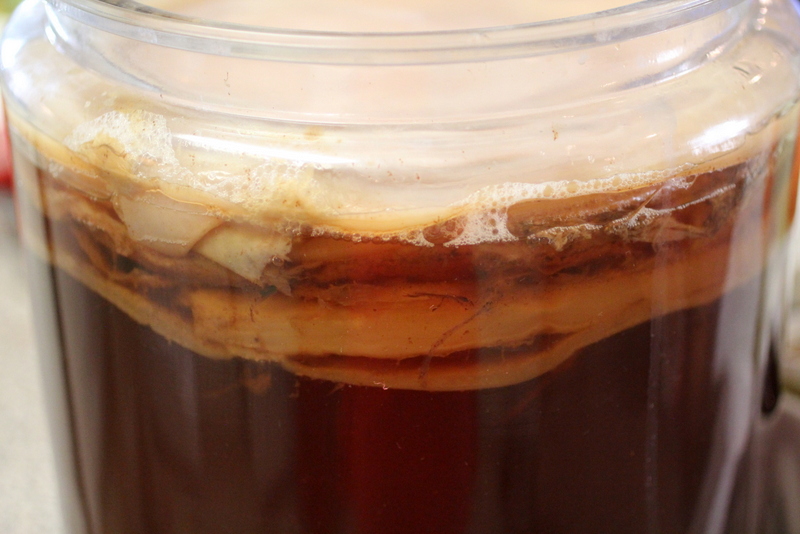
What do I do with all these SCOBYs?
Ahhh, the eternal question. Since you grow a new SCOBY each time you make kombucha, you’ll have to get creative. The SCOBYs can stack on top of each other and form a SCOBY hotel. I’ve fed them to a friend’s chickens, used them as fertilizer in my garden, given them away—the list goes on and on. We have lots of creative and delicious ways to use and even consume your extra SCOBYs. SCOBYs are good for you too!
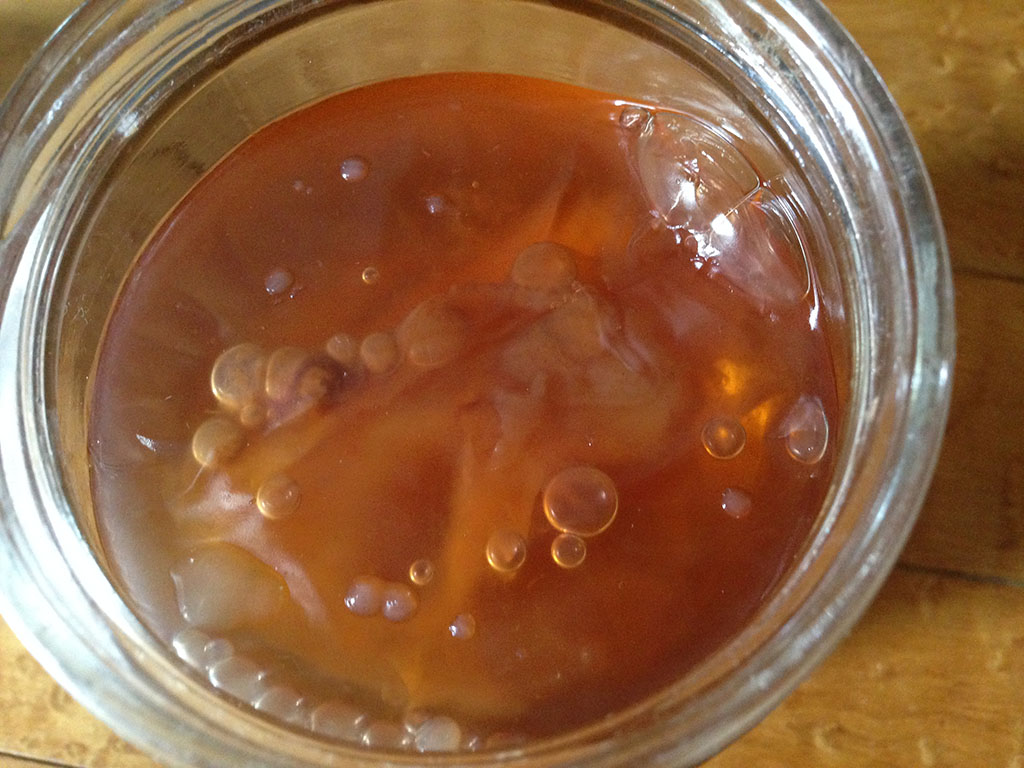
Why is my SCOBY thin?
This is usually caused by your brew not being warm enough. Kombucha likes to ferment at 75-80 degrees. Getting a heating strip will help keep your SCOBY at the perfect temperature, especially in the colder months. It can also be that your starter tea isn't strong enough. Let it keep fermenting at a warmer temperature and see if it gets a thicker SCOBY. You don't need one in the summertime. If your home is 75 degrees or warmer it should do fine without a heating strip.
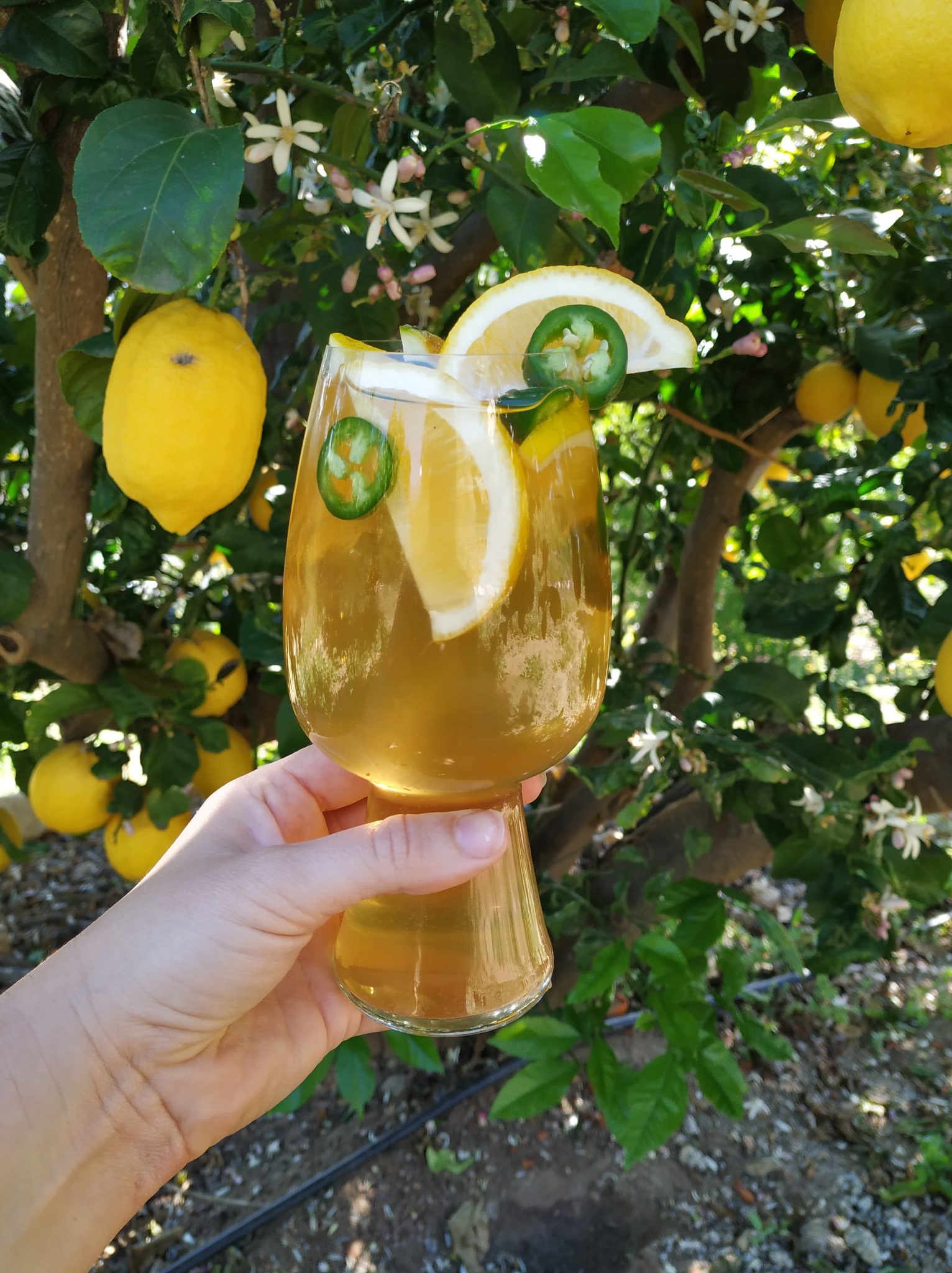
Summertime Kombucha
Kombucha is a must-have in the summertime! When the body is exposed to excessive heat, the liver can become stressed and kombucha can help! Drinking kombucha can keep you cool and hydrated in the summertime. Here are my best and most helpful tips for making kombucha in the summer when temperatures rise, not only outside but inside your home as well. If your house gets above 80 degrees, these tips can be a lifesaver!
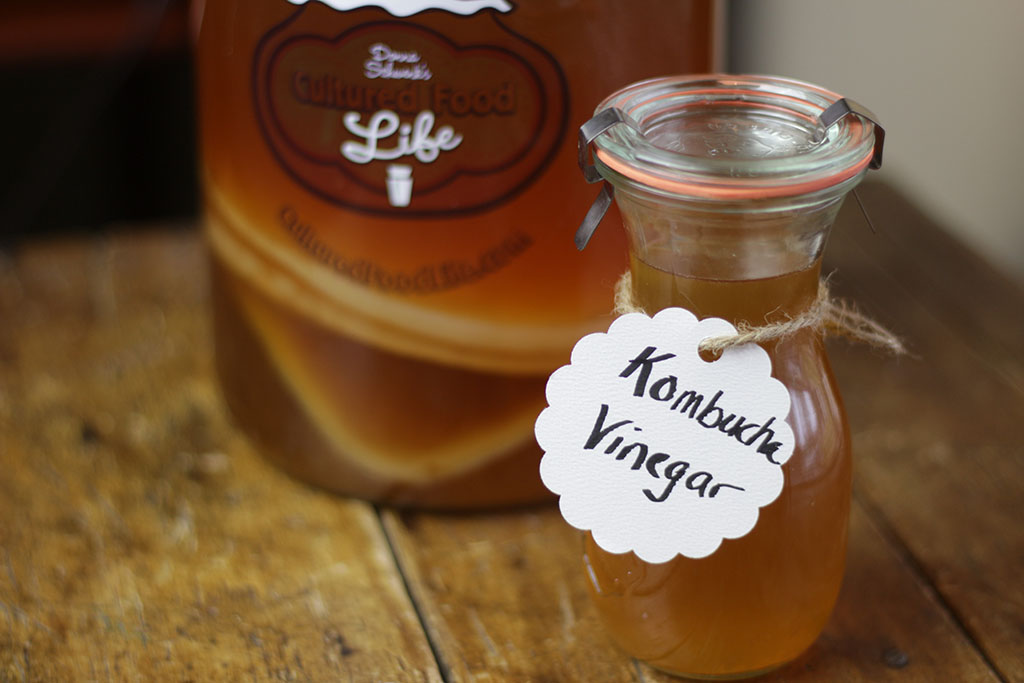
My kombucha is too sour - can I do anything with it?
In the early days of making kombucha, I would often let my kombucha go too long and it would lose its bubbliness. There were a few times it turned so sour that it made me squint and gasp and nobody wanted to drink it. One of the interesting things about fermenting kombucha is that it will eventually turn to vinegar if you leave it out long enough. Here are a few things you can do if your kombucha is too sour.
Listen To My Podcast
Watching tea turn into kombucha is quite a thing to behold. You give it the ingredients and let it work its magic. Billions of microbes and yeasts transform the tea into a bubbly probiotic tea that you will love. When you first start making kombucha you might be concerned and not know what to expect, so I made something to help you. I took pictures day by day, step by step, as well as top and side views so you can see what is happening each day. I have a time-lapse video for you as well, and hopefully, this will help you feel confident and assured that your kombucha is fermenting properly.
Are you on the list?
Sign up today and I'll send you my free Getting Started Guide!
Each week I'll send you updates, tips, recipes, and more! You might even be a winner of my weekly giveaway! (starter cultures, memberships, and more!)
Come be a part of my cultured food family!


